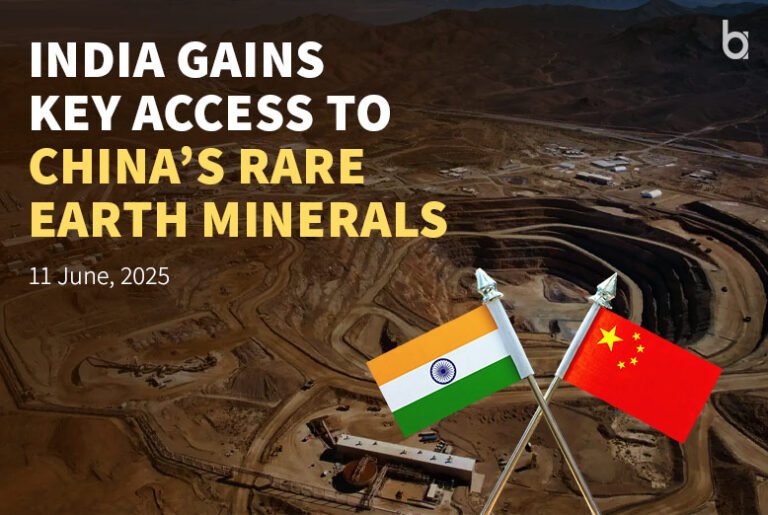Business APAC
June 11, 2025
In a move that could significantly impact India’s burgeoning electric vehicle (EV) industry, recent developments indicate that at least ten Indian auto component makers have received favourable endorsements from the Chinese embassy to procure rare-earth licenses. This news, emerging in mid-2025, provides a direct link to critical materials essential for high-performance electric vehicle (EV) motors and electronics.
While the industry welcomes this short-term relief from a long-standing supply crisis, a more strategic conversation is taking root. Experts and forward-thinking business leaders argue that we should use this moment to tackle the core issue of import dependency by developing a robust, domestic solution: urban mining and the recycling of rare earth elements from India’s waste.
A Welcome Bridge, Not a Final Destination
For manufacturers, the prospect of direct licenses from Beijing is a tactical victory. It de-risks production schedules and allows for more stable planning. However, it doesn’t alter the fundamental strategic vulnerability of relying on a single nation for over 80% of the world’s processed rare earth elements.
“An import license is a welcome bridge, but you don’t want to live on the bridge,” commented a senior industry analyst, familiar with the matter. “It solves today’s problem, but the strategic goal must be to build our own house on the other side. That house is a domestic, circular supply chain.”
This perspective frames the Chinese overture not as a permanent solution, but as a crucial window of opportunity for India to invest in a more resilient and self-sufficient future. The real prize, many argue, is not just access, but sovereignty over these critical resources.
India’s Richest Untapped Resource: E-Waste
The foundation for this self-sufficiency lies not in traditional mining, but in the nation’s rapidly growing mountains of electronic waste. According to data from the Global E-waste Monitor, India is one of the world’s largest contributors to e-waste. Over the next decade, people will scrap millions of conventional vehicles, computers, smartphones, and industrial electronics.
This waste stream, currently a significant environmental challenge, is also a rich, concentrated source of valuable materials, including rare earth elements like Neodymium, Praseodymium, and Dysprosium. Developing the sophisticated facilities required for rare earth elements recycling would transform this liability into a strategic national asset.
“We are throwing away the materials we are desperate to import,” said a policy expert advising on the national electronics policy. “Establishing a formal sector for rare earth elements recycling is the most logical step towards creating a circular economy and insulating our high-tech manufacturing goals from global volatility.”
The strength of a dual strategy
The most forward-looking business model combines the short-term advantage of import licenses with the long-term security of recycling. A company with an import license can meet its immediate production needs, thus generating the revenue and stability to invest in capital-intensive recycling infrastructure.
This synergy creates a powerful competitive advantage. Such a venture would uniquely withstand both geopolitical supply shocks and international price fluctuations. Government initiatives like the Production Linked Incentive (PLI) schemes for electronics and automotive components could make this two-pronged approach even more financially attractive for pioneers in the field of rare earth elements recycling.
As India solidifies its ambition to become a global manufacturing powerhouse, the narrative around critical materials is evolving. The news from Beijing is a significant and positive development. However, the ultimate winners will be those who look beyond the immediate opportunity and invest in the technologies that will power a self-reliant India tomorrow. The focus is shifting from merely securing a supply chain to owning it, and the process of rare earth elements is central to that vision.
Also Read: India’s Big EV Push: Attracting Global Players with Local Incentives



